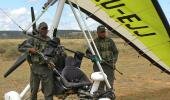Words & Photos: Raimondo De Simone | Video: Hugh Fraser
1:1,000 babies throughout Africa are born with a cleft palate or cleft lip. Operation Smile is a non-profit, volunteer medical services organisation that has provided more than 200,000 free reconstructive surgery procedures in over 60 countries (13 in Africa) worldwide since 1982. Their mission is simple: No child should have to live with the pain and isolation caused by a correctable facial deformity.
1:10 BABIES die before their first birthday from the inability to feed and infections. 1:1,000 babies throughout Africa are born with a cleft palate or cleft lip. Operation Smile is a non-profit, volunteer medical services organisation that has provided more than 200,000 free reconstructive surgery procedures in over 60 countries (13 in Africa) worldwide since 1982. Their mission is simple: No child should have to live with the pain and isolation caused by a correctable facial deformity. 1:10 BABIES die before their first birthday from the inability to feed and infections.
Those who survive grow up with significant speech abnormalities and breathing problems. Many suffer from burst eardrums and progressive deafness. Perhaps the most debilitating for these patients is the huge stigma attached to living with a facial deformity. Forty-five percent of Operation Smile’s patients are aged between 0 and 4 years, which represents the most delicate age for survival from clefts. I was born with this deformity, but was lucky enough to have parents who could afford the best medical attention available.
So this raises the question: What can be done to raise awareness and much needed funding for this organisation?
After much soul searching and brain storming, Willie Bronkhorst and I decided to start a campaign for the organisation by cycling the highest roads in the world on a mountain bike. We agreed that we'd finance the trip ourselves, so that all monies raised would go directly toward Operation Smile SA.
Span African Adventures, an owner-operated adventure company, offers such a cycling trip from Manali to Leh and includes the Kardung La in the Himalayas, northern India. The distance covered is 610 km (11,060 vertical metres ascent) in 11 days, and includes six high passes, three of which are in excess of 5,000 m above sea level.
Arriving in India
Our arrival in Mumbai proved tricky after we were almost fined for ‘importing’ our mountain bikes into the country. Thankfully, a more senior official come to our rescue and said, “Rather let them through to enjoy the beauty that the Himalayas has to offer.” He saved us a few thousand rand each, and was not wrong. The Himalayas is a truly magical experience!
From Mumbai, we caught a domestic flight into Delhi. What a crazy place! You have to deal with dogs, cattle, elephants, cars, taxis, busses, tuk-tuks, bicycle rickshaws, motorbikes, and people all competing for space on the over crowded roads. One of the local drivers summed it up well, “If you are a driver in Delhi, it’s a prerequisite to have a good brake, a good hooter, and good luck.” This craziness seems to work, as we didn’t see a single accident.
After spending two days in Delhi, it was time to leave the heat and humidity behind us and make our way to the town of Manali, at the foothills of the Himalaya Mountain range. The 14-hour bus trip proved interesting, with little sleep, as all Indian drivers believe in the power of the hooter.
Acclimatisation ride - Manali to Manali, 28 km & 800 m vertical ascent
Situated at approximately 2,000 m above sea level, Manali is a beautiful town surrounded by magnificent mountain ranges and cascading waterfalls. We unpacked and assembled the mountain bikes, ready to do our acclimatisation ride and test the mountain bikes, as well as get rid of any cobwebs that might be lingering in the lungs.
Day 1 - Manali to Marhi, 36 km & 1,350 m vertical ascent
We started early and soon after the rain gods decided to send their product our way. Not knowing what to wear or take with us in our backpacks, we had left wearing very little rainproof clothing. But rain was not going to dampen our high spirits, so we continued to Marhi on the Manali-Leh Highway, the only road that exists between these two towns. With this in mind, we knew the road would be full of trucks, cars, motorbikes, and road workers.
The first day was uphill for the entire 36 km. Towards the top of the climb, the clouds lifted and what lay before us was truly remarkable; mountains, mountains, and more mountains. We arrived in Marhi, at approximately 3,300 m above sea level, after about 5 hours, which included a few roadside stops for lunch and photos. We set up our tents near the small village of Marhi, and after a good lunch, a lazy afternoon, and dinner, we turned in for the night. It had been a successful first day.
Day 2 - Marhi to Keylong, 83 km & 1,330 m vertical ascent
We could see the pass that needed to be conquered and it wasn’t very appealing. It was 700 vertical metres in 16 km to the top of Rohtang (meaning ‘the pile of corpses’, due to people dying in bad weather trying to cross the pass) Pass, and it was tough. A small cup of tea from the Aun'tea' at the top was so rewarding and worth every pedal stroke required to get there. At 3,980 m above sea level, the 20 km downhill was indeed a treat after 52 km (including day one) of uphill at altitude. The clouds opened as we descended and more magnificent views greeted us.
After an undulating remainder of the day, we arrived in Keylong in the afternoon and stayed in a simple, but comfortable guest house.
Day 3 - Keylong to Patsio, 45 km & 1,100 m vertical ascent
After two days in the saddle, a bit of fatigue had set in and it was difficult leaving the comfort of the guest house’s bed. However, after a good night’s rest and with only 45 km to cover, we set out in high spirits. The first 20 km was once again uphill, but we knocked the ascent off kilometre by kilometre at a leisurely pace.
Our home for the night was Patsio Campsite, which was situated in a riverbed. As we entered the campsite, it began to rain. The rain continued for several hours and we were worried about the possibility of flooding, but our concerns were washed away when the rained suddenly stopped and the sun came out to play.
Day 4 - Patsio to Sarchu, 68 km & 1,305 m vertical ascent
During the days, we would climb high and sleep low to acclimatise to the altitude. Patsio Campsite was at 3,800 m above sea level, our highest camping spot to date. It was a daunting task knowing that we would climb to 4,800 m, the highest altitude to date, in the first 30 km of the ride.
After the uphill, we once again enjoyed a marvellous downhill and flat section known as the Sarchu Plains. The Plains are spectacular and boast many rocky outcrops. If I had to compare it to anything, I would imagine the top of the moon to look similar. We camped at 4,200 m above sea level.
Day 5 - Rest day
Day five brought with it our first rest day. The sleep in did us wonders and we were able to do some washing of both clothes and bodies. We hiked to a local Buddhist village, where a local lady (another Aun'tea') kindly invited us in for tea. Although we couldn't communicate, we managed and the tea was refreshing. The rest of the day was spent relaxing in camp.
Day 6 - Sarchu to Pang, 72 km & 1,200m vertical ascent
This would be another tough day, as we had to ride up two high passes. We ascended to 4,800 m, and then 7 kilometres later we rode up our first 5,000 m pass. After climbing to 5,065 m, the downhill into Pang was *29er mountain bike country and our bikes were put through their paces. It was a great day out on the bike, the best day so far.
Day 7 - Pang to Tsokar, 46 km & 385 m vertical ascent
Day seven was a relaxed and chilled day on the bike. The road to Tsokar was mostly tarred and flat, so we arrived at our campsite early in the afternoon, leaving us with the remainder of the day to rest up.
Day 8 - Tsokar to Rumtse, 65 km & 815 m vertical ascent
We cycled up the highest pass yet, at 5,385m above sea level, and the second highest motorable pass in the world, the Lachulungla. The climb was extremely long and tedious, and the weather changed from bearable to cold often during the ascent. I was extremely thankful for my K-Way Kilimanjaro '12 Shell Jacket, especially when sleet and rain began to fall. The 30 km descent to Rumtse was extremely cold, but the warm waterproof jacket was my pot of gold at the end of the rainbow.
On arrival in Rumste, it took a few minutes for our bodies to thaw out. After a few chai teas at the local dhabba, tented rest stops along the Manali-Leh Highway for travellers, we found a place that offered warm-water bucket showers. It set us back Rs100 (R16) each and was the best R16 we've ever spent!
Day 9 - Rumtse to Leh, 84 km & 826 m vertical ascent
This was our second last day on the bicycles. The route to Leh was an easy 84 km and only 825 m of climbing. After settling into the guest house, we headed into Leh for a meal and were looking forward to something more substantial than fruit and vegetables, our diet for the last two weeks. We knew we wouldn't find any beef, but chicken was available and it was finger licking good!
Day 10 - rest day in Leh
The day was spent taking in the local markets, doing some gift shopping, drinking good coffee, eating chocolate cake, and resting up.
Day 11 - Leh to Kardung La, 80 km & 1,950m vertical ascent
Day eleven was all about ascending from Leh, at 3,700 m, to 5,602 m above sea level. We ascended 1,900 m in 40 km to the top of the Khardung La, the world’s highest motorable pass. The last 5 km were the most difficult, but also the most rewarding of the entire trip. Once we reached the top of the pass, a massive sense of relief and accomplishment engulfed us. We headed back to Leh enjoying the massive 40 km downhill, but as we flew down, we had to be careful not to lose concentration so close to the end.
It had been a truly remarkable and life-changing experience for both Willie and I. There were a lot more positives than negatives, and to date, we have managed to raise almost R75,000. From now on, we plan to ride other mountain bike events and races for Operation Smile, hoping to raise more funds and awareness.
A special word of thanks goes to our generous sponsors that donated towards the cause: ARQ Consulting Engineers, Stefanutti Stocks Civils, Group 5 Housing, Trail Surveys, Arrow Motors, and De Simone Building and Civil Engineering Contractors. Thanks also go to Hugh Fraser for putting together two video clips of the adventure, and Penny Parker and her team at Cape Union Mart and K-Way for providing some warm winter apparel for the trip. To all our other private donators, we salute you and Operation Smile thanks you.

